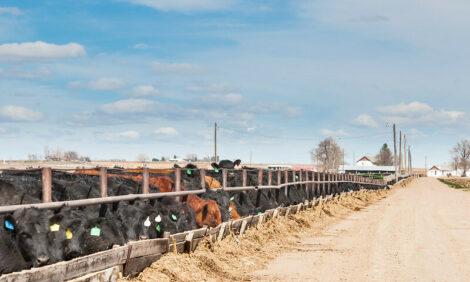



Ensure Successful Calving With Beef Meetings
US - The University of Purdue and the Indiana Beef Cattle Association are hosting a series of beef meetings to provide producers with valuable information on calving, vaccinating for scouts and the Sandhill Calving System.With the national herd decreasing and significant rises in input costs such as feed and land prices, beef extension specialist, Ron Lemenager, wants producers to understand the importance of calf survival and can be done during the calving season to improve that.
One way to improve calf survival is to protect them from scours. Scours in newborn calves is usually caused by a bacteria or virus. "Scours can rapidly dehydrate a calf, a leading cause of mortality. Force-feeding electrolytes with an esophageal feeder to rehydrate the calf is an important part of treating calf scours," Mr Lemenager said.
There are three main steps producers should take in order to protect the herd from scours: nutrition, antibody protection from colostrum and protection from nature's elements.
Cow nutrition will be a primary factor in determining colostrum quality and the calf's ability to absorb the immune globulins that provide it with passive immunity. "Colostrum is essential for calf health. It gives the calf the ability to resist disease and fight off infection," Mr Lemenager said.
Producers should make sure that the calf gets the colostrum shortly after birth. If the calf does not, then the large protein molecules that provide passive immunity will be virtually gone within 12 hours.
Environment also is important. Calving season can last several months, which means producers have to be prepared for different types of weather conditions. The type of environment the calf is born into should be dry and free of wind.
"Newborn calves need a low-stress environment free of mud, rain and wind, which are all big stressors for calves. If they are outside, they need some type of shelter where they can get away from the weather," said Mr Lemenager.
The Sandhill Calving System was developed so each cow that was calving could give birth in a clean pasture. It involves rotating pregnant cows to a clean pasture on a weekly basis. "A producer can start out with a set number of cows ready to calve within a month of each other. The producer will want to move the non-calved cows to a new clean pasture each week," Mr Lemenager said. This system separates newborn calves from later-born calves and also prevents the spread of disease.
The first meeting is 5 November in Butlerville. Other locations include Mitchell, Jasper, Greencastle, Martinsville, Richmond, Logansport, West Lafayette, Wanatah and Columbia City.
For more information on the meetings visit http://www.indianabeef.org/assn/documentz/oct2009/2009-10_regional_mtg_scheduleforweb.pdf or contact Lemenager at 765-494-4817, [email protected], or the IBCA at 317-293-2333.


